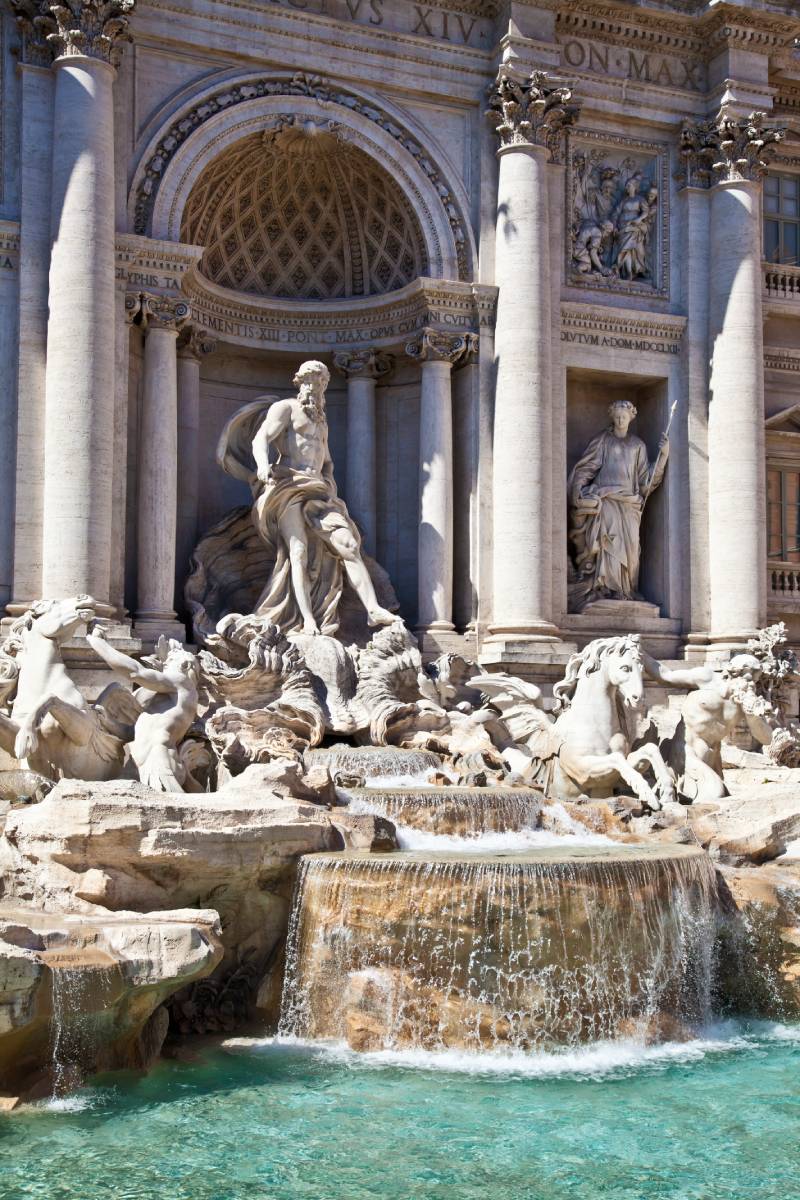
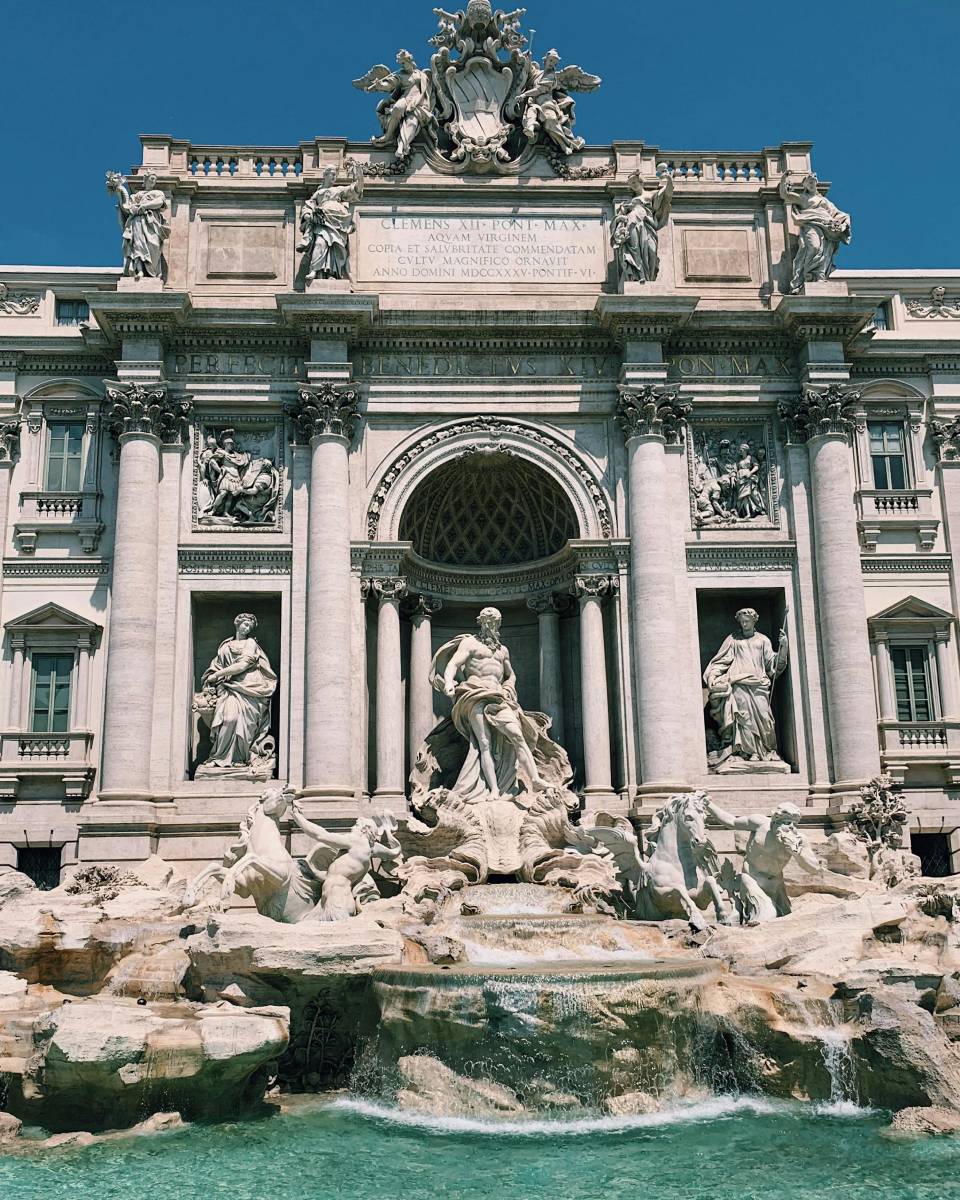
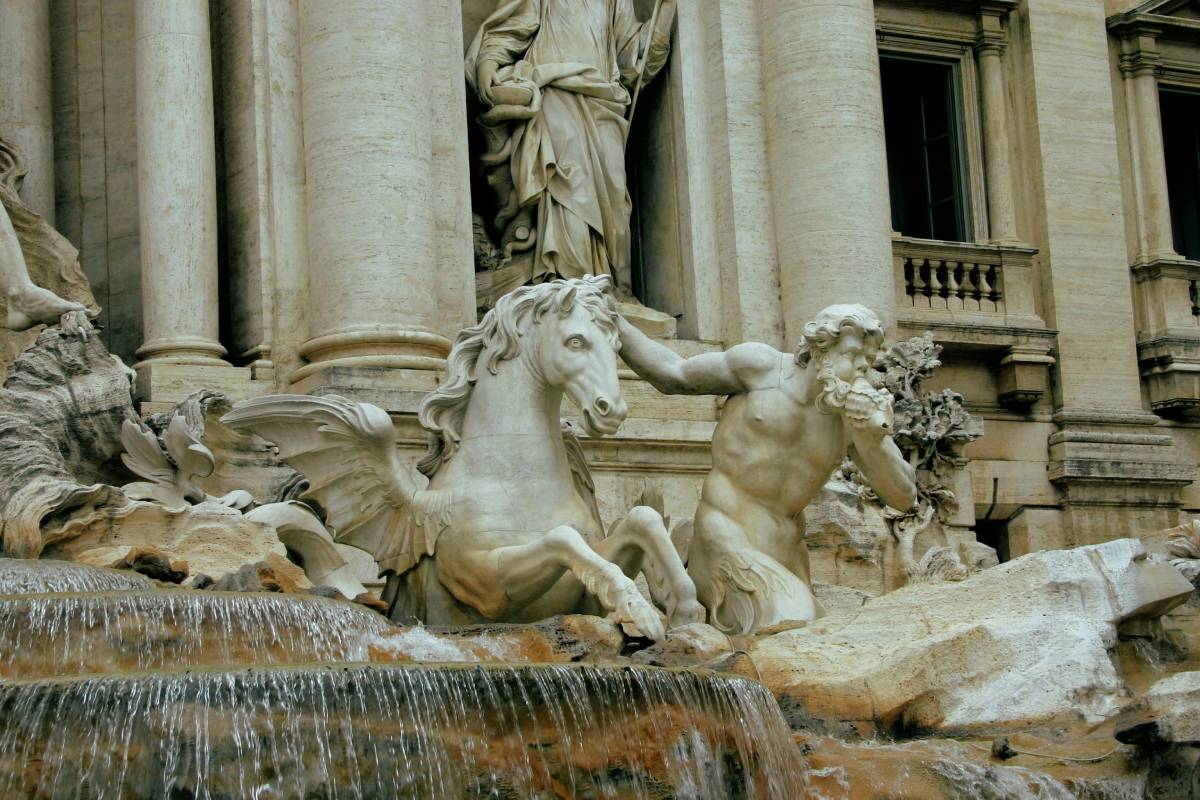
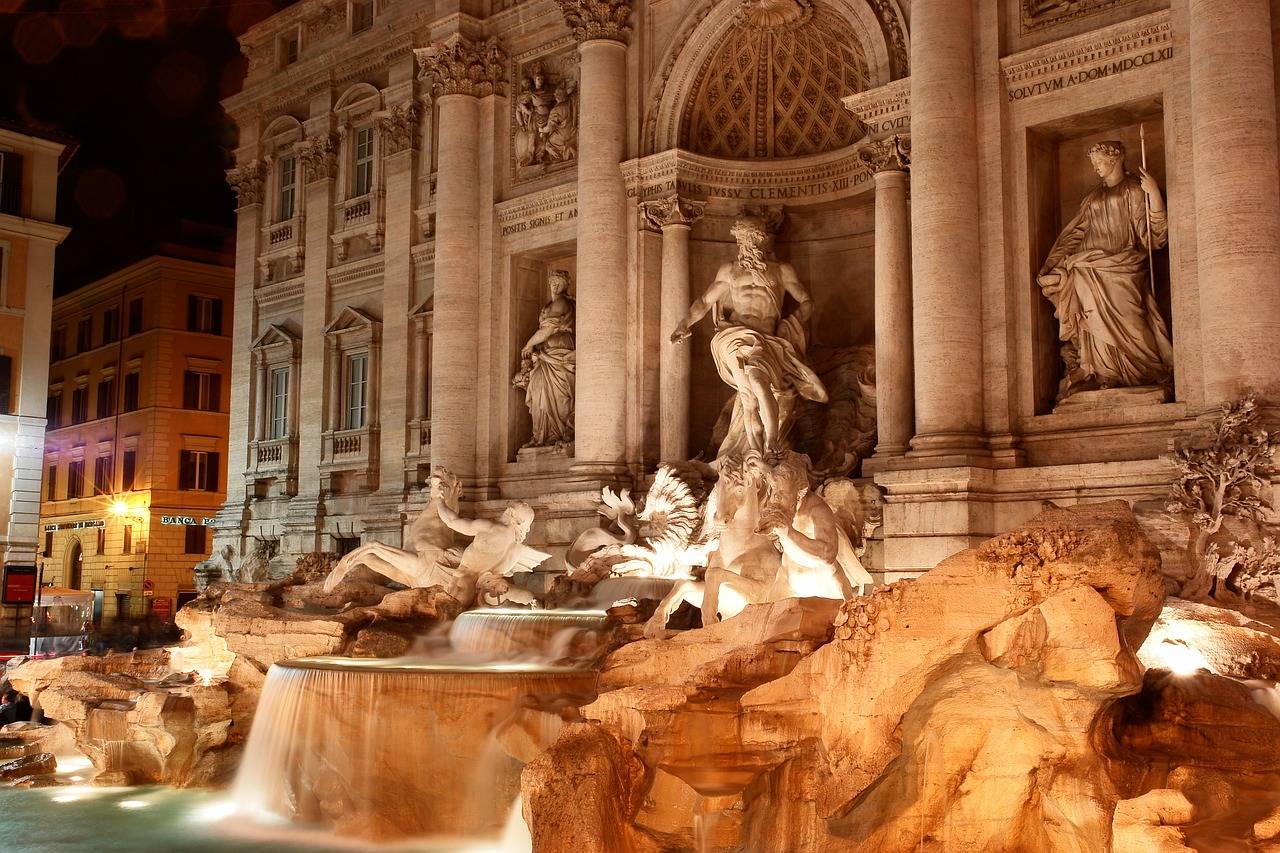
Rome is a city like no other, filled with stunning landmarks, ancient ruins, and beautiful fountains—and the Trevi Fountain (Fontana di Trevi) stands as its crown jewel. Far from a “hidden treasure,” it’s the largest and most iconic Baroque fountain in Rome, drawing millions of visitors yearly. But beyond its fame, the Trevi holds a magic all its own: the way sunlight dances on its travertine waves, the thrill of tossing a coin into its turquoise waters, and the weight of centuries of history in its sculptures.
A Masterpiece of Myth and Majesty
This monumental fountain (26 meters wide and 49 meters tall) is a tribute to Oceanus, the Roman god of water, surrounded by crashing waves, tritons, and seahorses. Designed by Nicola Salvi in 1762, it marks the endpoint of the Aqua Virgo, an ancient aqueduct still in use today. The Trevi isn’t just art—it’s a functional piece of Rome’s water system, blending myth and engineering.
The Trevi Fountain (Fontana di Trevi) is Rome’s most famous fountain—a massive Baroque spectacle of crashing waves, mythical figures, and gleaming travertine stone.
Key Facts:
Size: 26m tall, 49m wide (Rome’s largest fountain).
Design: Built in 1762, featuring Oceanus, sea horses, and Tritons.
Legend: Toss one coin (right hand over left shoulder) to ensure your return to Rome. Over €1 million is collected yearly for charity!
Best Time to Visit: Sunrise or after midnight for fewer crowds.
Why Visit?
It’s free, unforgettable, and surrounded by gems like the Pantheon and Rome’s best gelato (Giolitti).
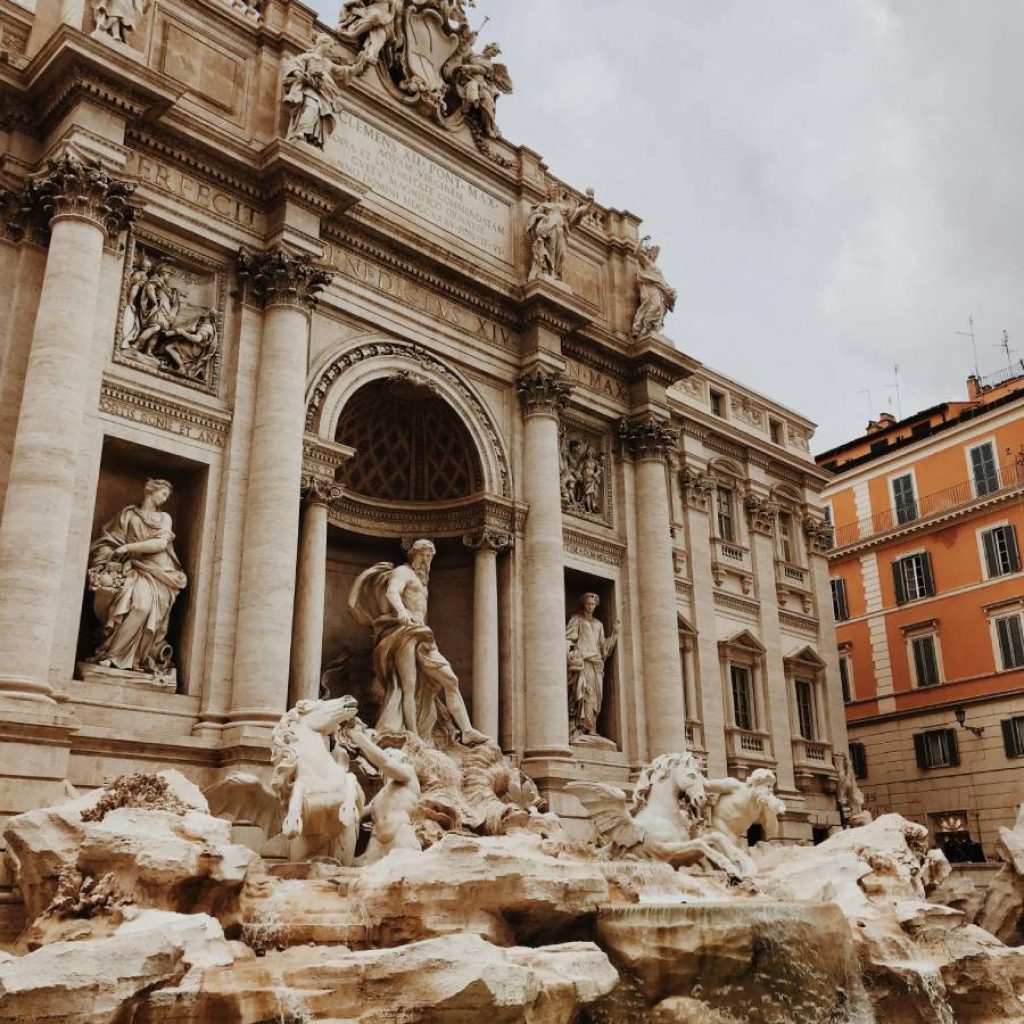
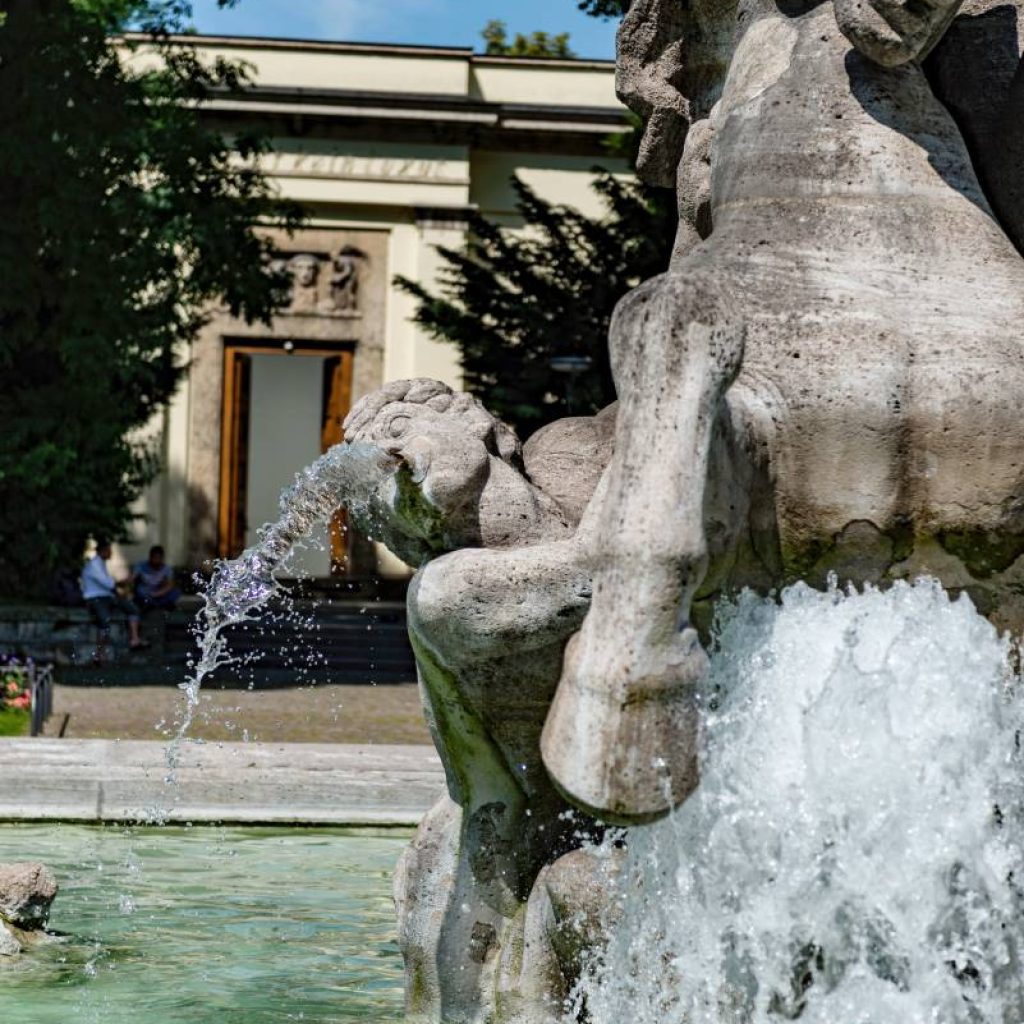
The Trevi Fountain (Fontana di Trevi) was completed in 1762 under Pope Clement XIII, during Rome’s Baroque revival. It was part of a grand project to restore Rome’s ancient aqueducts and celebrate the city’s power. Unlike smaller fountains, the Trevi was designed to awe visitors with its size and drama.
Architect: Nicola Salvi (though Giuseppe Pannini finished it).
Patron: Pope Clement XII, who held a public contest for its design.
Purpose: To mark the endpoint of the Aqua Virgo, a 1st-century BC aqueduct that still supplies its water today.
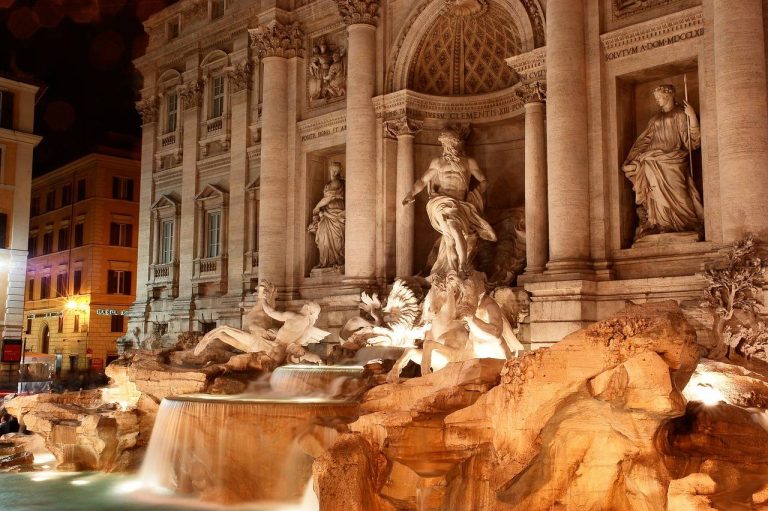
The Trevi Fountain is a Baroque masterpiece, far from small—it’s a towering spectacle of travertine stone and marble. Every detail tells a story:
Central Figure: Oceanus, the Roman water god, rides a shell chariot pulled by seahorses (one wild, one calm, symbolizing the sea’s moods).
Tritons and Rocks: The crashing waves and tritons (mythological sea creatures) represent the power of nature.
Allegorical Statues: Flanking Oceanus, Abundance spills water from her urn, while Health holds a cup—a nod to the aqueduct’s life-giving water.
These elements celebrate Rome’s engineering prowess (the fountain marks the Aqua Virgo aqueduct’s endpoint) and its mythological roots.
Look closely for:
The “Ace of Cups”: A carved vase on the right (Salvi’s jab at a rival barber who criticized his work).
Latin Inscriptions: Honor Pope Clement XII, who commissioned the fountain.
Coat of Arms: The papal insignia reminds visitors of the Church’s role in Rome’s rebirth.
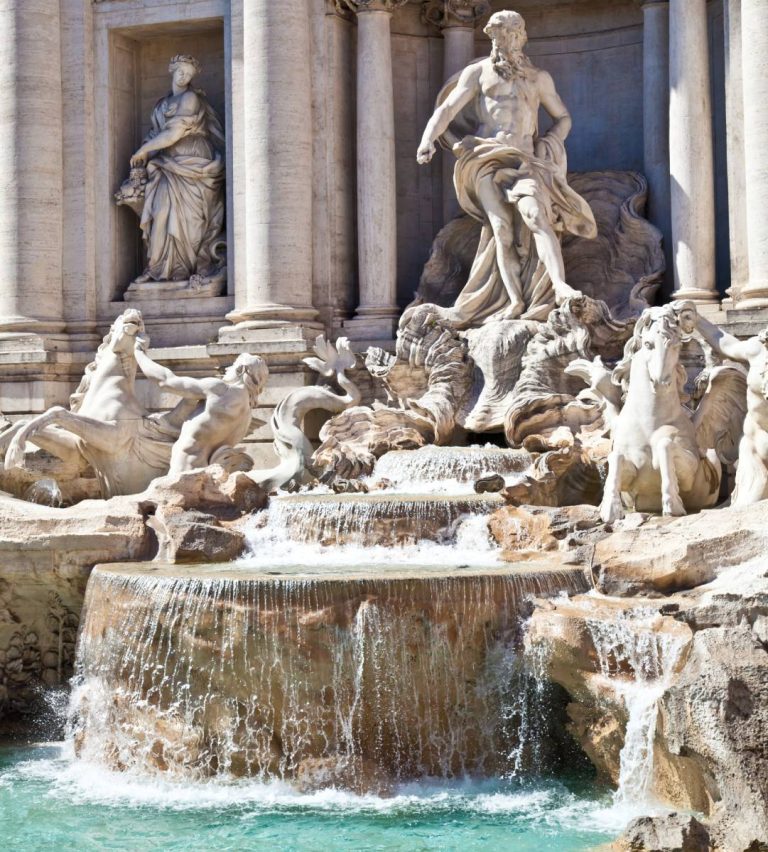
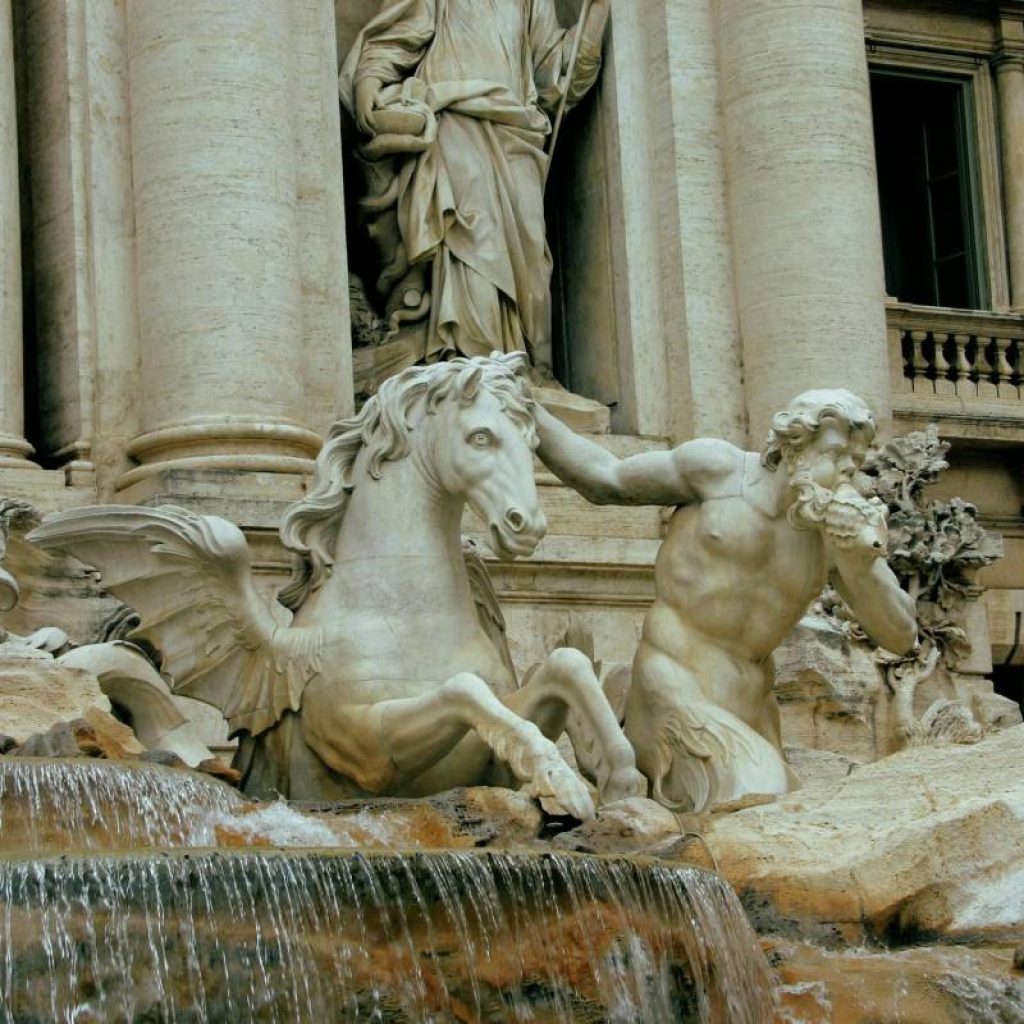
Dominating this bustling square is the Altare della Patria (Victor Emmanuel Monument), a towering white marble tribute to Italy’s first king. Climb to the terrace for panoramic views, then explore:
Trajan’s Column (5-min walk): A 2,000-year-old victory monument with spiral reliefs.
Capitoline Museums (7-min walk): Michelangelo-designed piazza with ancient sculptures.
The official residence of Italy’s president sits atop Rome’s highest hill. Highlights include:
Changing of the Guard (Sundays at 4 PM).
17th-century frescoes and the Pauline Chapel (open for guided tours).
Gardens with rare roses and city views.
The magnificent Trevi Fountain sits in the heart of Rome’s historic center, nestled between Via del Corso and the Quirinal Hill. This prime location makes it easy to visit while exploring other iconic landmarks:
Just 3 minutes walk to the Spanish Steps
5 minutes to the Pantheon
7 minutes to Piazza Venezia
10 minutes to the Quirinal Palace
Sunrise (6-7 AM): Experience the fountain glowing in golden light with minimal crowds.
Late Evening (11 PM-12 AM): See the Baroque sculptures dramatically lit against the night sky.
Fewer Crowds: While the Trevi is never empty, early/late visits offer breathing room.
Perfect Lighting: Soft morning or artificial evening light makes photos magical.
Cooler Temperatures: Especially valuable in summer.
Bring a camera or phone—you will want to take photos.
Visit in spring or fall for good weather and fewer tourists.
Wear comfortable shoes—Rome’s streets are often made of stone.
Read a little about the fountain before you go. Knowing the story makes it more special.
Discover hidden gems and iconic sights with our expert guides
Tour Highlights:
Trevi Fountain & Its Secrets – Learn Baroque secrets, coin-toss legends, and how the Aqua Virgo aqueduct still feeds it today
Lesser-Known Wonders – Discover charming spots like the “Little Fountain of Lovers” (Fontanella degli Innamorati) near Trevi
Comfortable Exploration – We walk at a leisurely pace with plenty of photo stops and Q&A time
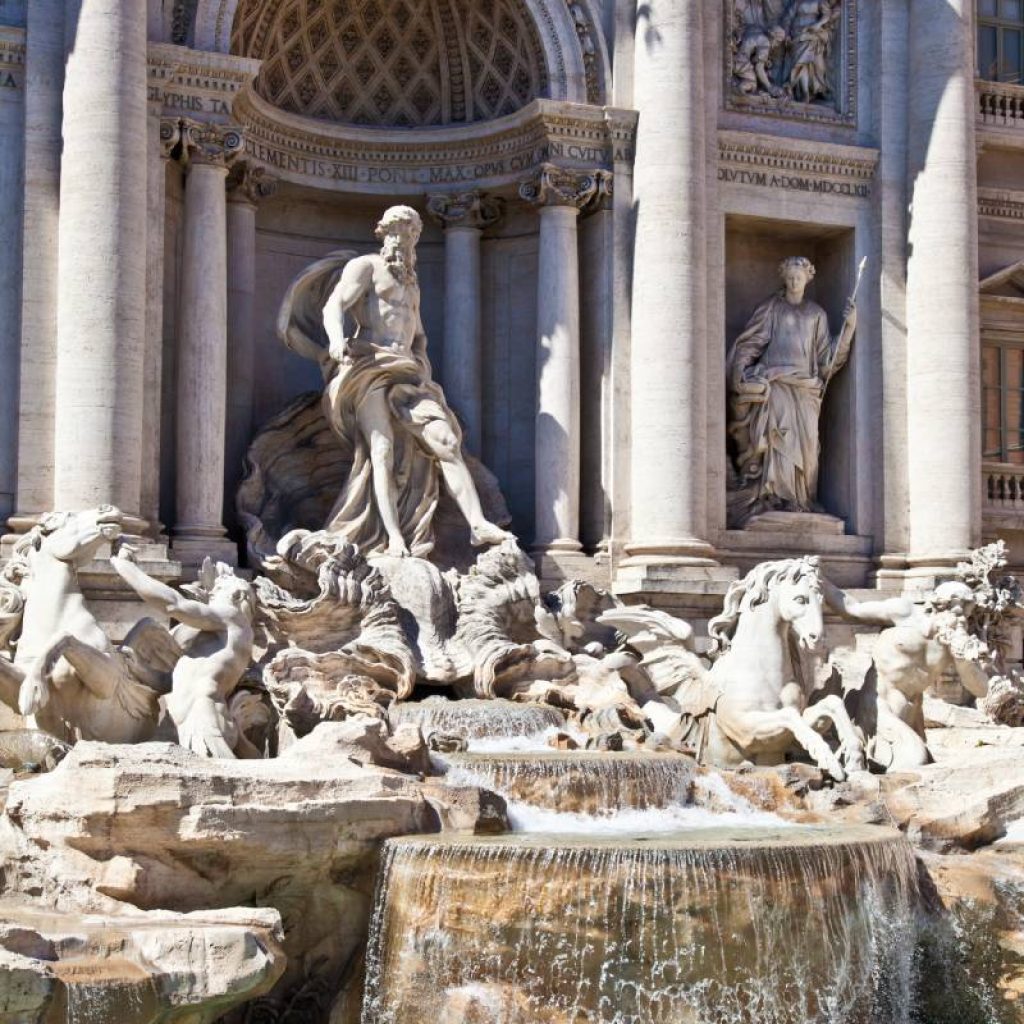
Now that you know more about the Trevi Fountain, it’s time to see it for yourself. This small fountain has a big story to tell. Whether you love art, history, or just want a quiet moment in a busy city, it’s worth a visit.
Let us help you plan the perfect trip to Rome. Book a guided tour in Rome and enjoy the best walking tours with friendly guides and great stories. Discover famous places and hidden gems in Rome like the Trevi Fountain
Yes, the Trevi Fountain (Fontana di Trevi) is very easy to find, it’s one of Rome’s most centrally located landmarks
No, like most fountains in Rome, it is free to see
Most fountains in Rome have clean water, but it’s best to check signs nearby.
The streets are old, so it might be hard for wheelchairs. A tour guide can help you find easier routes
You can visit the fountain in 10–15 minutes, or stay longer to take photos and learn more.
Yes! Many Rome walking tours include the Trevi Fountain if you ask. It’s a great stop for people who love hidden gems in Rome
Yes, you can. It’s a great place for photos, especially because it’s quiet and not crowded. The artistic details look beautiful in the sunlight.
Yes, you can visit at night. There are street lights, and the area is usually safe. It’s very peaceful in the evening.